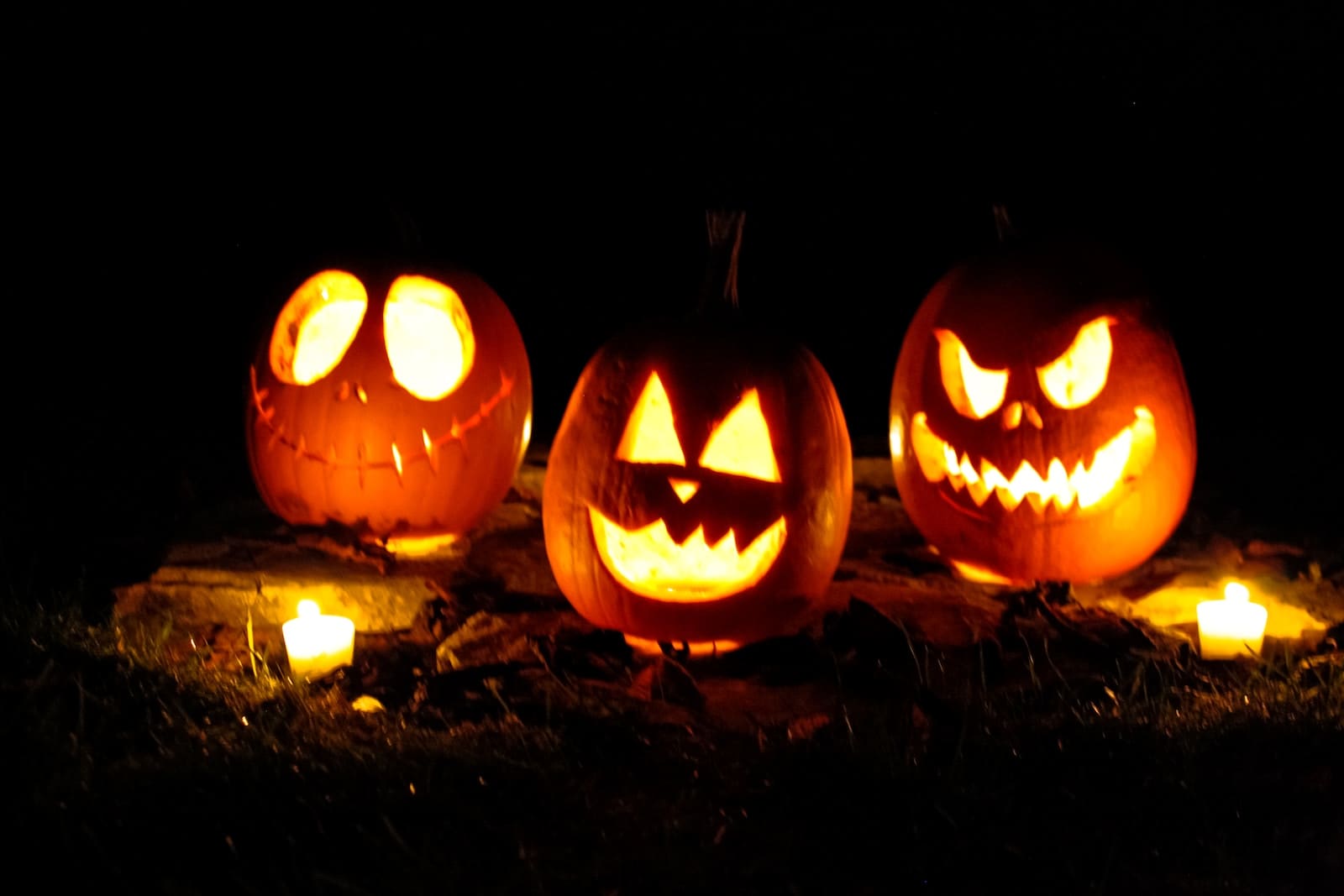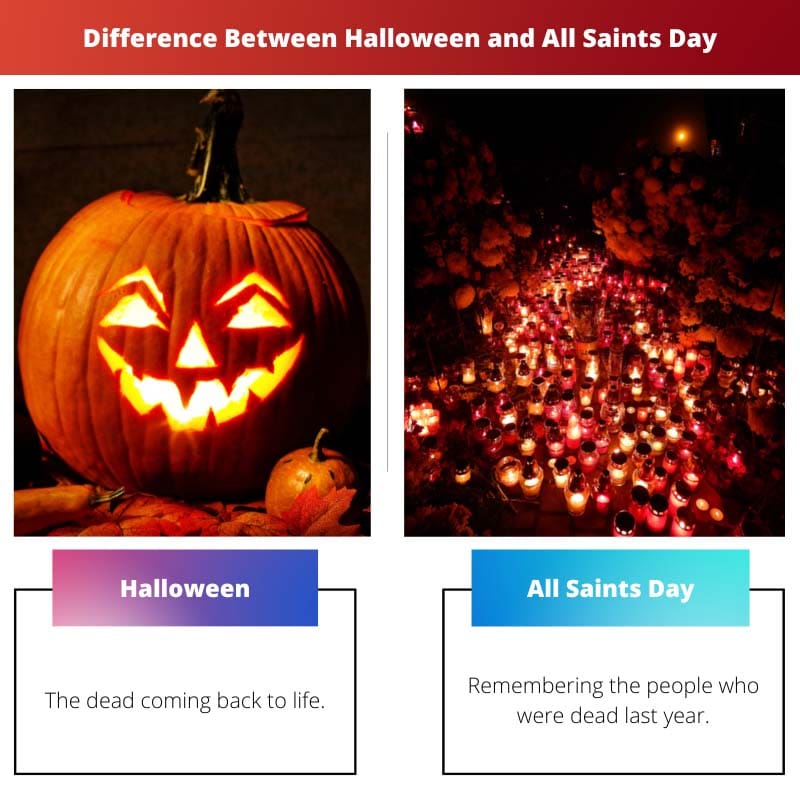We celebrate many festivals and occasions.
The world celebrates many festivals, and people tend to believe in these festivals so much. This world has many cultures and festivals that we don’t know about.
That also includes Halloween and all saints day; this is an occasion that is celebrated worldwide. It means a lot, and it is very historic.
Key Takeaways
- Halloween celebrated on October 31st, is a secular holiday featuring costumes, trick-or-treating, and spooky-themed festivities. All Saints’ Day, observed on November 1st, is a Christian holiday honoring all saints and martyrs.
- Halloween originated from the ancient Celtic festival of Samhain, while All Saints’ Day has its roots in the early Christian church’s commemoration of saints.
- Both holidays are related to themes of death and the supernatural but differ in their cultural and religious significance.
Halloween vs All Saints Day
Halloween is a holiday associated with themes of trick-or-treating, terror and general horror that is celebrated every year on October 31st, mainly in the United States. All Saints’ Day is a religious holiday that honours saints and is observed by some Christian denominations in many countries.

The roots of Halloween can be dated back to the time Celtic feast of Samhain, which took place on November 1 in modern calendars.
Women dressed in colourful costumes and lit campfires to scare off spirits on the day that, as it was supposed, now the ghosts of the deceased reappeared in their houses.
Pope Benedict IV consecrated the Pantheon in Roman to the Blessed Virgin around May 6, 609, and thus became known as “All Saints Day.”
As Pope Gregory III erected a chapel just at Capitol in honour of all the saints in the eighth century, the date was altered to Nov 1. Still, Pope Gregory IV constantly renewed this commemoration of all the heroes of the worldwide Church.
Comparison Table
| Parameters of Comparison | Halloween | All Saints Day |
|---|---|---|
| Meaning | Remembering the people who were finished last year | Calling out names in the Church and placing them |
| Celebration | wearing costumes and having a night party | celebrated during the Frankish Empire in 834 |
| Date | 31st October | November 1 |
| Origin | Festival celebrated in Samhain | celebrated during the Frankish empire in 834 |
| Significance | It means the first day of Allhallowtide | Calling out names in the Church and remembering them |
What is Halloween?
Halloween is a celebration commemorated annually on October 31st, especially in Western cultures, to celebrate the evening of the Catholic feast of All Hallows’ Eve (Feast of All Saints), which honours all of the faith’s saints.
Historians say that Halloween, or Hallowe’en (an abbreviation of “All Hallows’ Evening”), evolved from an ancient Pagan holiday in which individuals lighted campfires and dressed up in costumes to fend off spirits.
As a result, the Halloween ritual continues today, with people dressing in colourful costumes, passing out “trick-or-treat,” making jack-o-lanterns, and getting together to avoid temptation.
Halloween might have derived primarily from the pre-Christian festival Samhain, which was observed on November 1 in early medieval Irish as the start of the new year.
Nonetheless, it appears to have evolved primarily from later Middle Ages Catholic feasts of the dead, such as All Saints’ Day is on November 1, and All Hallows’ Day is on November 2.
Even by the ninth century, October 31 had been known throughout Western Christendom as All Hallows’ Day, which was subsequently abbreviated to Samhain.
This day is mainly considered a national holiday; everyone celebrates this day with costumes, and they pick up old characters to dress up.
They put up night parties and drinks, making them feel like horror. Pumpkins are a unique character that is considered to mark Halloween.

What is All Saints Day?
Going to Mass is a wonderful tradition and component of tradition with the Decorum of All Saints – after all, it is a Sacred Day of Devotion! In the Communion, we recall the heroes in a particular way each time we go to Mass.
Other customs on this day involve reading about saints, praying to the saints – notably one’s Matriculation Saint – and praying for their intervention so that we, too, may become saints.
The two-day commemoration of the Blessed Trinity — those who have been with God almighty and those on the way to heaven – is known as All Saint, as Well as All Souls.
The Church honours those Christians who have reached spiritual maturity on November 1st, the Reverence of All Saints. It is something to keep all of the saints who the Catholic Church has also canonized.
The Church commemorates and pleads again for the faithful gone, our two siblings who have been marked with the sign of faith, on the Visitation of All the Dear Dead (All Souls’ Day) a day earlier.
We specifically pray for all parishioners. At Basilica, Masses are held yearly to commemorate All Saints Day.
The Gospels for All Saints Day originate from the Preaching on the Mount. Notably, the Four noble truths, which secular indoctrination says are Heaven’s “Basic Dispositions”!
Because all of the saints had joy in the middle of sadness or suffering, this verse is particularly suited for All Saints.

Main Differences Between Halloween and All Saints Day
- The main difference between Halloween and All saint Day is the dress code. On Halloween, people wear dresses of their choice and on all Saint days, people wear white or normal dresses, which shows grief for the dead people.
- The other difference is the way of celebration. Halloween is celebrated at night with drinks, a party, and all the other fun gestures. But all saint day does not follow this practice.
- On Halloween, pumpkin represents a sign of horror or haunted scary feelings. But on all saint’s days, the candles and angels represent the peace of calmness of the occasion.
- Many people are fond of Halloween as it is celebrated worldwide, and all saints day is not that famous. And only come of the catholic churches celebrate or follow this occasion.
- A holy feast on All Saints day represents love and gratitude towards god. On Halloween, there is no such feast that represents god. It is a gathering of many people with different outfits and costumes representing dead people.

- https://www.ceeol.com/search/article-detail?id=921440
- https://books.google.com/books?hl=en&lr=&id=oKsLBwAAQBAJ&oi=fnd&pg=PA202&dq=difference+between+halloween+and+all+saints+day&ots=GbqgzZDMVz&sig=J73ILnsIXaEffssLwnufkGJRwQ4

It is a bit remarkable how people can take something so important and make it about something as frivolous as dressing up and getting drunk. Their intentions may be good, but there’s no denying the poor representation.
The origins of these two traditions are so fascinating and really highlight how traditions can evolve and change over time. It makes you wonder what new traditions we will create in the future.
It’s interesting that Halloween is a more internationally recognized holiday, while All Saints’ Day is much more specific to certain Christian denominations. It shows how different cultures can put their own spin on holidays.
It is really fascinating how two such different celebrations can be so close together. It makes you truly appreciate the differences in culture across the world.
It’s not surprising to hear the two holidays have completely different origins. A day of celebration and a religious holiday would naturally be very different from one another.
It’s quite interesting how the two holidays differ, with Halloween being a more open and secular celebration and All Saints’ Day being a very serious and religious day. The cultural meanings behind both are quite fascinating.